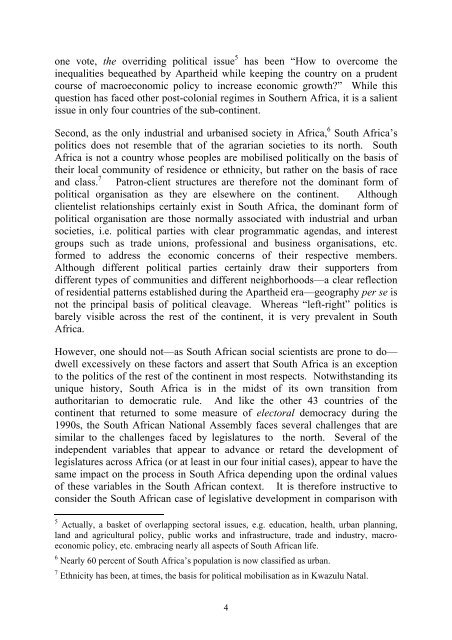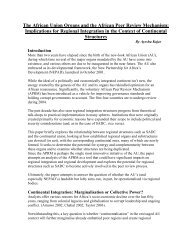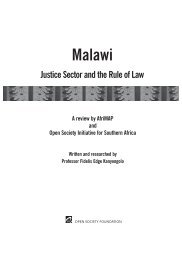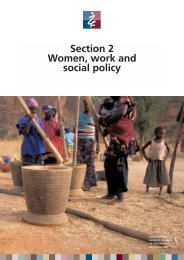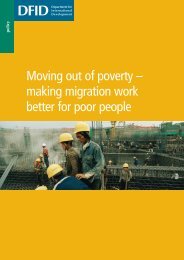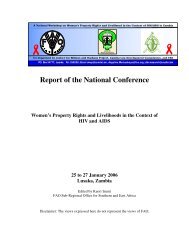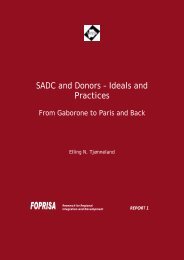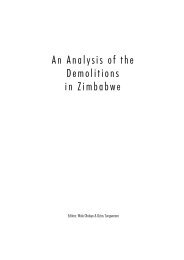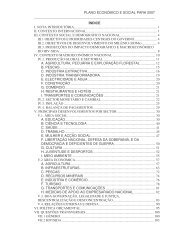400Kb ~ 2 min (33 pages) - SARPN
400Kb ~ 2 min (33 pages) - SARPN
400Kb ~ 2 min (33 pages) - SARPN
Create successful ePaper yourself
Turn your PDF publications into a flip-book with our unique Google optimized e-Paper software.
one vote, the overriding political issue 5 has been “How to overcome theinequalities bequeathed by Apartheid while keeping the country on a prudentcourse of macroeconomic policy to increase economic growth?” While thisquestion has faced other post-colonial regimes in Southern Africa, it is a salientissue in only four countries of the sub-continent.Second, as the only industrial and urbanised society in Africa, 6 South Africa’spolitics does not resemble that of the agrarian societies to its north. SouthAfrica is not a country whose peoples are mobilised politically on the basis oftheir local community of residence or ethnicity, but rather on the basis of raceand class. 7 Patron-client structures are therefore not the do<strong>min</strong>ant form ofpolitical organisation as they are elsewhere on the continent. Althoughclientelist relationships certainly exist in South Africa, the do<strong>min</strong>ant form ofpolitical organisation are those normally associated with industrial and urbansocieties, i.e. political parties with clear programmatic agendas, and interestgroups such as trade unions, professional and business organisations, etc.formed to address the economic concerns of their respective members.Although different political parties certainly draw their supporters fromdifferent types of communities and different neighborhoods—a clear reflectionof residential patterns established during the Apartheid era—geography per se isnot the principal basis of political cleavage. Whereas “left-right” politics isbarely visible across the rest of the continent, it is very prevalent in SouthAfrica.However, one should not—as South African social scientists are prone to do—dwell excessively on these factors and assert that South Africa is an exceptionto the politics of the rest of the continent in most respects. Notwithstanding itsunique history, South Africa is in the midst of its own transition fromauthoritarian to democratic rule. And like the other 43 countries of thecontinent that returned to some measure of electoral democracy during the1990s, the South African National Assembly faces several challenges that aresimilar to the challenges faced by legislatures to the north. Several of theindependent variables that appear to advance or retard the development oflegislatures across Africa (or at least in our four initial cases), appear to have thesame impact on the process in South Africa depending upon the ordinal valuesof these variables in the South African context. It is therefore instructive toconsider the South African case of legislative development in comparison with5 Actually, a basket of overlapping sectoral issues, e.g. education, health, urban planning,land and agricultural policy, public works and infrastructure, trade and industry, macroeconomicpolicy, etc. embracing nearly all aspects of South African life.6 Nearly 60 percent of South Africa’s population is now classified as urban.7 Ethnicity has been, at times, the basis for political mobilisation as in Kwazulu Natal.4


